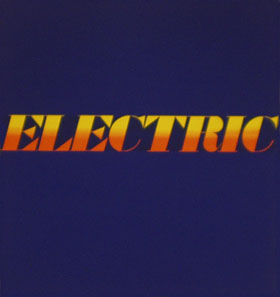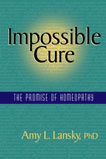Electric Frequently Asked Questions
Getting to Know Electric
Electric is a computer-aided design system for electrical circuits. It is primarily intended for integrated-circuit layout, but it also handles schematics and even textual hardware description languages.
Electric understands a number of different technologies (environments of design) including MOS (nMOS and many flavors of CMOS), bipolar, and hybrid layout. Besides these IC layout technologies, it is able to work with many other graphical forms, including schematics, artwork, FPGA architectures, and more. A built-in technology editor allows the modification and creation of new design environments.
Electric integrates many different tools for the analysis and synthesis of circuitry. The system comes with Design-rule checkers, simulators, routers, and much more. In addition, the system has an elegant model for integrating tools which makes it relatively easy to add new ones.
Besides being able to handle arbitrary technologies and tools, Electric has a powerful front-end that provides layout constraints and platform portability. The constraint system allows connected components to remain sensibly connected, even when the design is modified. The platform portability means that Electric is able to run on nearly any computer (the Java code runs anywhere and the C code compiles on UNIX/LINUX, Windows, and Macintosh).
Electric is free software, and is an official GNU package.
Electric was inspired by the Firesign Theatre's album "I Think We're All Bozos On This Bus". When asked about the future, one interviewee states "It's Electric":
There is no relation between this system and the Ed Ruscha painting of the same name
(shown below: Electric, 1963, oil on canvas, 72 x 67 inches,
Albright-Knox Art Gallery, Buffalo, New York).

General Usage
As bugs are discovered in the current release of Electric, they are posted here.
Yes. Electric is 64-bit clean and has been successfully run on many 64-bit computers.
When reading CIF or GDS files, Electric needs to know which layers in the files correspond to layers in Electric. Electric has a separate set of layer maps for every technology. Therefore, you must make sure (1) that the desired technology is the current one and (2) that the layers in that technology match the layers in your CIF / GDS file.
Since Electric drawings consist of connected parts, and since CIF and GDS have no connectivity in them, this means that imported CIF and GDS does not contain the necessary information for full Electric design. You can still view the files, and you can still include them in mask output. However, many Electric tools (such as network analysis and DRC) will not properly understand the layout. Use the Node Extractor to convert the artwork to full Electric components.
No. The VHDL compiler only accepts structural VHDL (just the interconnect of components). This compiler is old, and it simply doesn't support modern VHDL constructs.
Each technology in Electric supports a specific set of design parameters. None of the CMOS layout technologies have 4-terminal transistors. However, the schematic technology does have 4-terminal transistors.
The library that is distributed with the silicon compiler is not actually valid for chipmaking. The reason for this is that the library is derived from an older one which was much larger in scale. By scaling that library down to submicron sizes, it was able to be used by the silicon compiler. However, no effort has been made to ensure that the scaling was correct, or that any of the cells are still valid. Thus, the library is purely for "illustration purposes."
If you wish to construct a library for use with the silicon compiler, simply create the cells that exist in the current library ("and2", "and3", "or2", "inverter", etc.) Be sure that the cells follow the form used in the library (i.e. horizontal power and ground rails along the top and bottom, all other interconnect done vertically, same port names for power, ground, inputs, and outputs). You will then have to set the various parameters in the "Silicon Compiler" preferences. If you have a library, and wish to make it available for other users, contact Static Free Software for help with the intergration.
Static Free Software is an Artisan Components EDANet partner. As a result, users can join the Artisan program and then get standard cell libraries for use in layout and in the Silicon Compiler.
Everything else that we have is given away for free. All of the "technology files" are built-in. Additional ones can be created, and as they do, they will become part of the distribution.
An example chip, with over 1,000,000 transistors, is available for download here. This chip measures on-chip and inter-chip capacitance structures. It was designed by the Asynchronous Design Group of Sun Microsystems.
Static Free Software is an Artisan Components EDANet partner. As a result, users can join the Artisan program and then download standard cell libraries for use in layout and in the Silicon Compiler.
Anyone who has created circuitry that they wish to share with the Electric community should contact Static Free Software. Your designs could be the cornerstone of other people's work.
Legal
The GNU Public License protects Electric (it can be found in the file "COPYING", in every source module, and in the "About" dialog). The short description of this document is: (1) you get the source code for free (2) you can make money with it in any way possible (sell it, sell chips made with it, etc.) (3) if you modify it in any way, and then sell the system, you must make those modifications (source code) available to anyone who asks. If this description is not accurate, it is because I am not a lawyer (I only play one on the web). Consult a real lawyer to find out what your limitations actually are.
Documentation and Help
The user's manual is packaged with the Electric distribution, and it is also available in various forms. Click here for more information.
The book Computer Aids for VLSI Design was originally published by Addison-Wesley in 1987, and it is still available in various forms. Click here for more information.
Java Electric is documented with "Javadoc". You can download the current Javadoc, and you can run the "javadoc" Ant script to generate it yourself. Click here for more information.
The most active discussion forum is at Google, called "ElectricVLSI":
https://groups.google.com/group/electricvlsi
There are also two GNU mailing lists devoted to Electric:
bug-gnu-electric@gnu.org
(subscribe at https://mail.gnu.org/mailman/listinfo/bug-gnu-electric)
and
discuss-gnu-electric@gnu.org
(subscribe at https://mail.gnu.org/mailman/listinfo/discuss-gnu-electric)
New releases of Electric are announced on all of these mailing lists.
In addition, you can send mail to:
info@staticfreesoft.com
|
Not only are we giving away free software, but we're letting you in on a well-kept health secret: Homeopathy. Read all about it in the book Impossible Cure: The Promise of Homeopathy. How do open-source CAD systems and Homeopathy relate? They don't, but there is a connection here which we leave to you to discover! |

|
Help with Java Electric
Electric has two simulators built in: ALS (our own) and IRSIM (from Stanford University). The GNU distribution does not include IRSIM, because it cannot be redistributed under the rules of the Free Software Foundation. If you wish to add IRSIM, you can download the additional source code.
The most likely reason is that you have not properly installed Java3D. Make sure the CLASSPATH environment variable is set properly. It is also necessary to run Electric with the VM argument --add-opens=java.desktop/sun.awt=ALL-UNNAMED